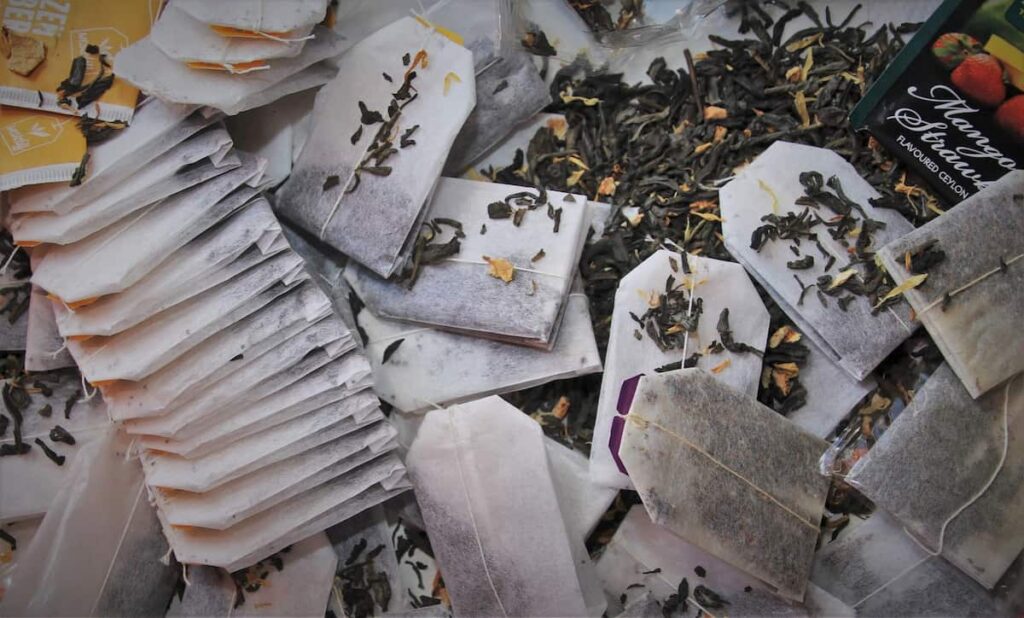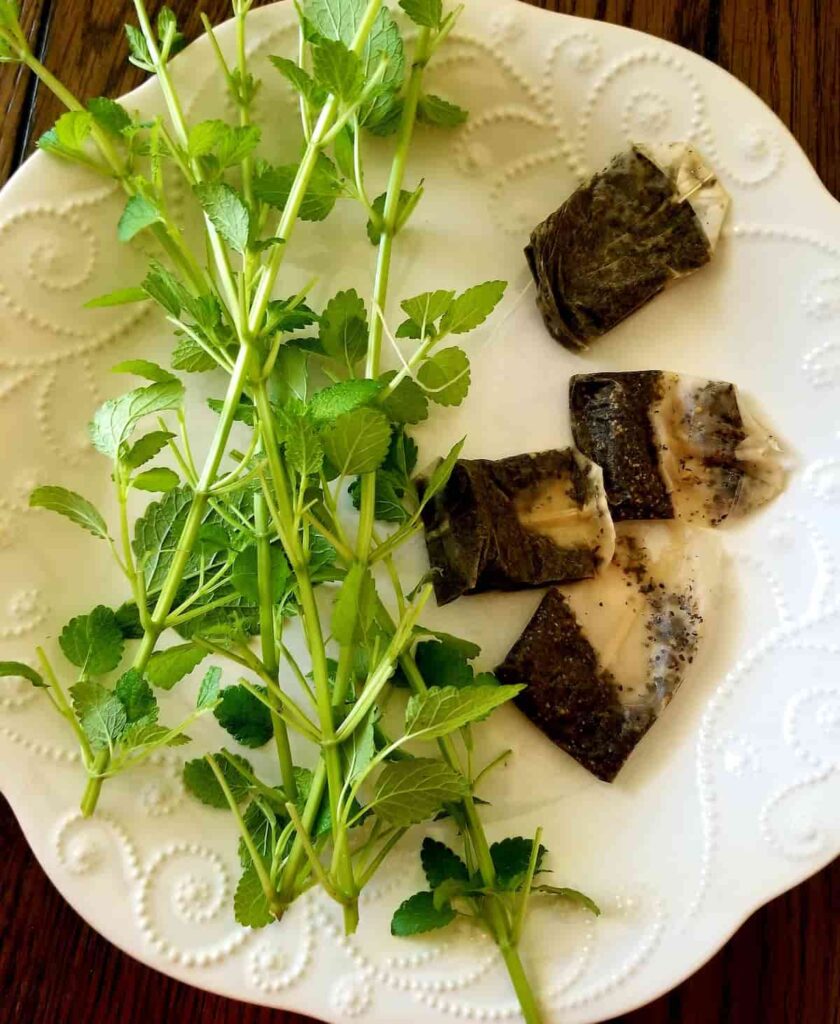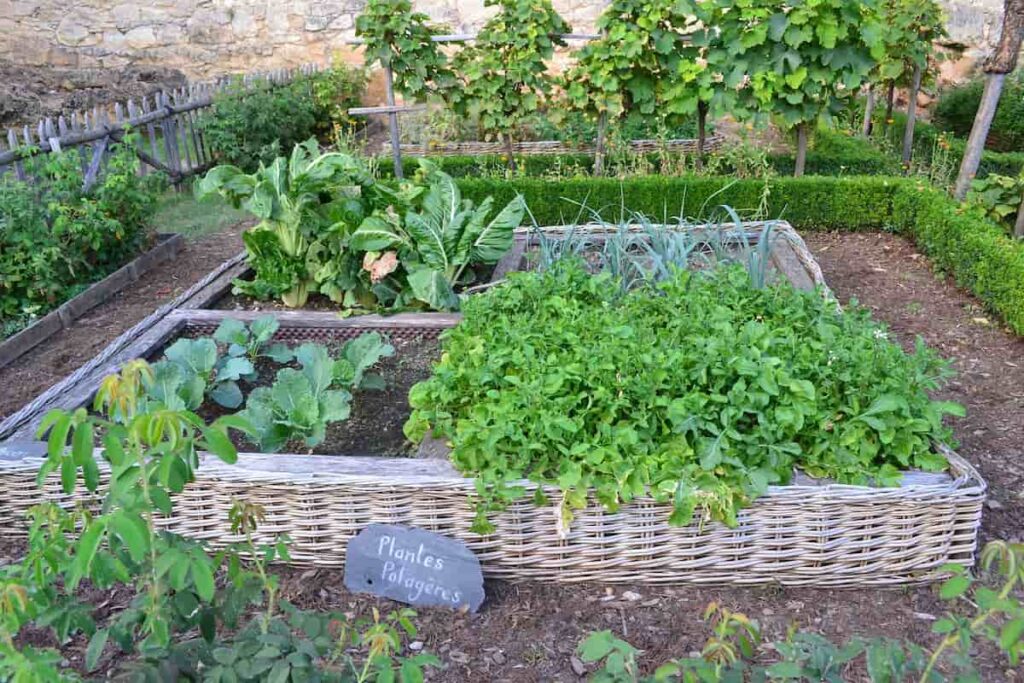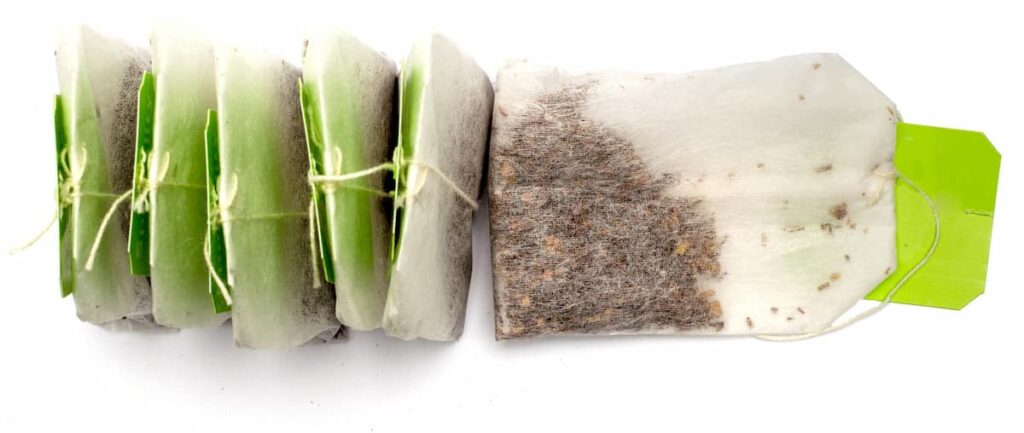Compost increases fertility, enhances soil structure, and improves nutrition and water retention. It also encourages microbial activity, which leads to rich and healthy plants and helps reverse climate change by increasing the amount of carbon in your garden. Compost tea is a liquid version of solid compost materials. These include soluble plant nutrients and a complex community of beneficial microorganisms.

While there are endless ways to prepare compost tea, all teas start by adding compost to water to extract plant nutrients and microorganisms. You can apply liquid tea as a soil drench, foliar spray, or added to an irrigation system. Compost tea is a balanced and nutritious fertilizer you can make by mixing compost in water.
This fertilizer can increase growth, bloom, and yield on flowering plants, vegetables, houseplants, and crops. The trick to compost tea is using well-aged compost with no dangerous pathogens and a pump to aerate the tea. Thus, beneficial microorganisms in the soil can thrive in tea, which makes for healthy plants.
How to make compost tea for your garden
Benefits of compost tea
- Compost tea is an excellent overall plant health booster; healthy plants can resist pests and diseases.
- Good tea improves soil health. If the soil is nutrient-rich, the need for fertilizer is minimal.
- Compost tea improves the soil’s water retention ability, reducing the need for frequent watering.
- Soil structure is improved with regular applications of compost tea. Compost tea helps loosen the clay soil to move air and water, and the sandy soil helps to retain water and nutrients.
- Applications of compost tea stimulate plant root growth. Deep roots retain moisture better and help reduce flow.
- When sprayed on plants, compost tea adds beneficial germs to plants. By occupying leaf surfaces, these organisms prevent potential disease organisms from gaining a foothold.
- Compost tea combats the adverse effects of chemical-based pesticides, herbicides, and fertilizers on beneficial microorganisms.
In case you missed it: Custard Apple Diseases and Pests (Sugar Apple): Anthracnose, Black Canker, Diplodia Rot, Leaf Spot, Symptoms, Causes, and Prevention

Different types of compost tea
- Non-aerated compost tea
Put some compost in some water to create an extract you can use in your garden. This can help you stretch out smaller compost piles and help you divide the nutrients in the compost faster into your plants.
- Aerated compost tea
In this process, you can add air to your brewing process. Most people do this through a small aquarium air pump. The air creates an aerobic environment, which promotes the growth of healthy bacteria and other microorganisms. When the brewing process is finished, the beneficial microorganisms in your tea have expanded rapidly, making it a powerful strength serum for your garden.
What tools do you need to make compost tea?
- Compost – To make compost tea, you first need an active compost pile with organic matter. A basic compost tea recipe demands two cups of finished compost means it’s completely decomposed and has a sweet smell. If you’re into vermiculture or warm compost, use warm castings instead of compost to create a natural fertilizer called warm tea.
- A large bucket – You’ll need a five-gallon bucket to steep your compost.
- A food source – An additional food source will be needed to multiply the bacteria in your compost tea. Use a sugar source such as maple syrup or fruit juice. You can use granulated sugar, but liquid sugar sources are an easy option because the sugar has already dissolved in water. Other options for this food source include kelp or fish hydrolysate.
- An air pump – You’ll need to aerate your compost tea to prevent toxin-causing anaerobic microbes from breeding. Use an air pump or air stone/bubbler to aerate the water during brewing.
- Unchlorinated water – Use unchlorinated water to keep the bacteria alive. Tap water may involve trace amounts of chlorine that can harm beneficial microbes. You can also collect rainwater or buy filtered water from a grocery store to make compost tea.
- Brewing bag (optional) – To reduce dirt, put your compost in a mesh bag before adding it to your water. This brewing bag will help keep large portions of the compost from your tea, saving you the hassle of pressing the finished product before adding it to the spray bottle.
Making compost tea at home
- You should put compost in a plastic sandwich bag and sniff it. Then seal the bag and leave it for three days. If the compost smells worse, it requires more time in the bin/pile. Develop an aeration system to produce the required earthy-smelling compost tea.
- To finish the aeration system, cut off three extra parts of the tubes, each with a length equal to or greater than the height of the bucket. You should attach one end of each of the three parts of the tubes to a port on a three-port gang valve. Then you should plug the open end of each of these tubes with an air stone and rest the plugged ends of the tubes at the base of the bucket. Air stone will diffuse this air into the bucket to supply the microorganism to the compost tea with oxygen.
In case you missed it: How to Grow Sarpagandha for Beginners: Guide and Steps to Propagation, Planting, and Care

- You should fill an empty five-gallon bucket with water within three inches of the top. To vaporize the chlorine, run the aquarium pump for an hour. After that, turn off the pump and temporarily transfer the water to the water can or separate the five-gallon bucket.
- Using a plastic scoop, add a gallon of loosely packed mature compost to the bucket, covering the plugged ends of the tubes. Then, using a water container, fill the bucket within three inches of the top using a garden hose attached to the rain barrel. Then, add two tablespoons of unsulfured molasses to the solution and stir well until added. Molasses feeds microorganisms beneficial in compost and also enrich tea with iron.
- Run the aquarium pump continuously for three days. Shake the tea twice daily with a stick to help stimulate microbial activity, ensuring the plugged ends of the tubes remain submerged. After three days, you can turn off the aquarium pump and remove the tubing from the bucket. Let the fertilized tea stay for 10 to 20 minutes to slow microbial activity.
Tips for using compost tea
All your outdoor and indoor plants can benefit from a little boost of compost tea. Most plants can use compost tea with full force unless otherwise noted. Also, it can be beneficial to make a few buckets at a time to ensure you always have something at hand. Just like fertilizer, you may want to apply it early morning or late evening. You should not apply it during the day’s heat; it evaporates much tea from the plants. Fertilizers also tend to burn plants with the harsh heat of the sun’s rays.
Hanging baskets and containers
- Compost tea is the best option if you want a little secret about how your hanging baskets and container flowers and plants thrive and look beautiful throughout the season. This is the perfect steady food for power container plants. Compost tea allows your flowers and plants to thrive. Even quick growers and heavy feeders like annuals will significantly benefit from a dose of compost tea every few weeks.
- Once every two weeks, use compost tea as an alternative to watering your plants. Aim to use around a quarter of a gallon of tea per container, depending on its size. For large containers, use half a gallon to provide a good source of nutrients.
In case you missed it: How to Grow Cardamom (Elaichi) from Seeds at Home: Soil, Germination, Planting, Pests, Diseases, and Care

Vegetable plants
- Compost tea is also the perfect, all-natural liquid fertilizer for vegetable plants. Wait until the transplants or your seeds grow enough to allow the plants to be established. Then, use compost tea as an alternative to watering your plants once every two weeks.
- Aim for around 1/4 of a gallon of fertilizer per plant. Be sure to soak the plant’s foliage, as the tea can be absorbed through the leaves and the roots.
In case you missed it: How to Grow Mangosteen Fruit from Seed to Harvest: Check How this Guide Helps Beginners

Flower beds
In addition to vegetable and container plants, compost tea is an excellent boost for annual and perennial flower beds. Like garden vegetables, apply tea every few weeks to give plants a steady stream of nutrients.
Bushes, shrubs, and newly planted trees
Even your large plants can benefit from two compost teas throughout the year. Aim to use 2 to 3 gallons of tea per shrub or around the bush. For newly planted trees, this is also a great way to give plants an additional boost of nutrients when established. Use it as the initial water after planting a new tree.
Indoor plants
Don’t even forget about all your indoor plants. Plants such as Spider plants, Peacock plants, Easter Lily, and holiday cacti can all use the occasional boost of compost tea.
Application methods of compost tea
- The color of your compost tea should be pale yellow or brown. If the tea smells bad, don’t use it. This means unwanted pathogens have formed, and the tea can harm your plants. It should smell sweet and earthy. If the tea is black or opaque, dilute it with water, up to a 10:1 ratio.
- You can put fresh compost tea directly on the roots of plants grown in soil without further filtering. To use it as a leaf spray in any hydroponic system, filter the tea through fine mesh fabric, such as an old pillow case, then pour it into a spray bottle. However, if you apply it and pour your compost tea to work within a day or two, germs start dying soon. Compost tea is a healthy supplement to your plant’s regular feeding system. Use tea within 36 hours. In the compost tea, beneficial pathogens will not survive more than a few days. So, it’s essential to use compost tea when it’s fresh.
In case you missed it: India Herb Planting Calendar: Month-wise Growing Chart, Schedule Guide, and Season Dates

- You can apply compost tea directly to the soil in your garden. Transfer the tea to a water container, and you can apply the tea to the soil around your plants. You should apply compost tea to the soil for the best results two weeks before your plant starts to bud. Compost tea is also a great addition of soil for young and newly transplanted plants.
- You can transfer the compost tea to a spray bottle and use it as a leaf spray. Foliar spray is something that is applied directly to plant leaves. You can mix it with water if the compost tea is very dark. Add 1/8 teaspoon of vegetable oil and stir the mixture. Spray the tea mixture on the leaves early or late in the evening. Always use diluted compost tea for fertilizing young or delicate plants.
Conclusion
Compost is a valuable resource for every grower. It is a slow-release source of nutrients and helps build up soil fertility and manage moisture. Compost prevents plant diseases and keeps plants healthy by maintaining active populations of beneficial microbes around the roots.
You can benefit from compost by brewing some tea, even if your indoor garden is hydroponic or otherwise soil-free. If you want an easy way to boost your plants during the growing season without spending time, then compost tea is the way to go. All the natural and organic products will make your plants look complete, well-fed, and healthy throughout the year.
- How to Grow Hibiscus from Flower
- Plantation Ideas for Home Decoration: A Beginners Guide
- Flower Garden Designs and Layouts for Beginners
- Planting and Spacing Techniques in Papaya: A Beginner’s Guide
- Growing Gold: Essential Techniques for Planting Pineapples
- How to Make Kalanchoe Plant Bushy: Home Remedies and Solutions
- 11 Reasons Why Your Gardenia is Not Blooming: Home Remedies and Solutions
- Eco Elegance: The Guide to Designing a Drought-Tolerant Landscape
- Gardening on a Slope: Strategies for Hillside Landscaping
- Nourish and Flourish: Top Organic Mulches for Thriving House Plants
- Everything You Want to Know about Indian Mogra Flower: Discover Uses and Growing
- Green Thumb Success: Expert Tips for Cultivating Greenhouse Pumpkins All Year Round
- Maximize Growth & Flavor: The Ultimate Guide to Companion Planting in Herb Gardens
- How to Control Rhododendron Problems Naturally: Home Remedies and Organic Ways to Fix Them
- Natural Magic: The Remarkable Benefits of Cinnamon for Plants
- Best Steps to Revive Dying Tulip with Natural and Organic Treatment
- 10 Reasons Why Your Angel Trumpet is Not Blooming: Remedies and Treatment
- How to Fix Periwinkle Leaf and Flower-Related Problems: Natural Remedies and Solutions
- How to Fix Zinnias Leaf and Flower Problems: Discover Natural and Home Remedies
- Organic Steps to Induce Lemon Tree Flowers: A Comprehensive Guide
- Bloom Booster: Crafting the Perfect Homemade Bougainvillea Fertilizer
- Optimizing Growth: A Guide to Applying NPK Fertilizer for Potted Plants
- 10 Best Homemade Fertilizers for Rubber Plant: DIY Recipes and Application Method
- How to Boost Female Pumpkin Flowers: Effective Steps for More Flowers and High Yields
- Transform Your Indoor Garden: Top Benefits of Pink Salt for Houseplants
- 10 Best Homemade Fertilizers for Peacock Plants (Calathea): Easy DIY Guide
- Unlock Blooms: 9 Reasons Why Your Potted Chrysanthemum is Not Blooming
- 8 Reasons Why Your Potted Hibiscus is Not Blooming: Fix it with Simple Solutions
- Unlock Blooms: 9 Key Reasons Your Potted Frangipani Won’t Flower
- 10 Reasons Why Is My Ice Plant Not Blooming: Remedies and Treatment
- 10 Reasons Why My Potted Hydrangea Not Blooming: Treatment and Remedies
- 10 Reasons Why is My Wisteria Not Blooming: Remedies and Treatment
- 10 Reasons Why is My Goldfish Plant Not Blooming: Remedies and Treatment
- Maximize Your Space: Ultimate Guide to Balcony Gardening with Grow Bags
- 10 Reasons Why Your Iris is Not Blooming: Remedies and Treatment
- 10 Reasons Why Your Anthurium Plant is Not Blooming: Treatment and Remedies